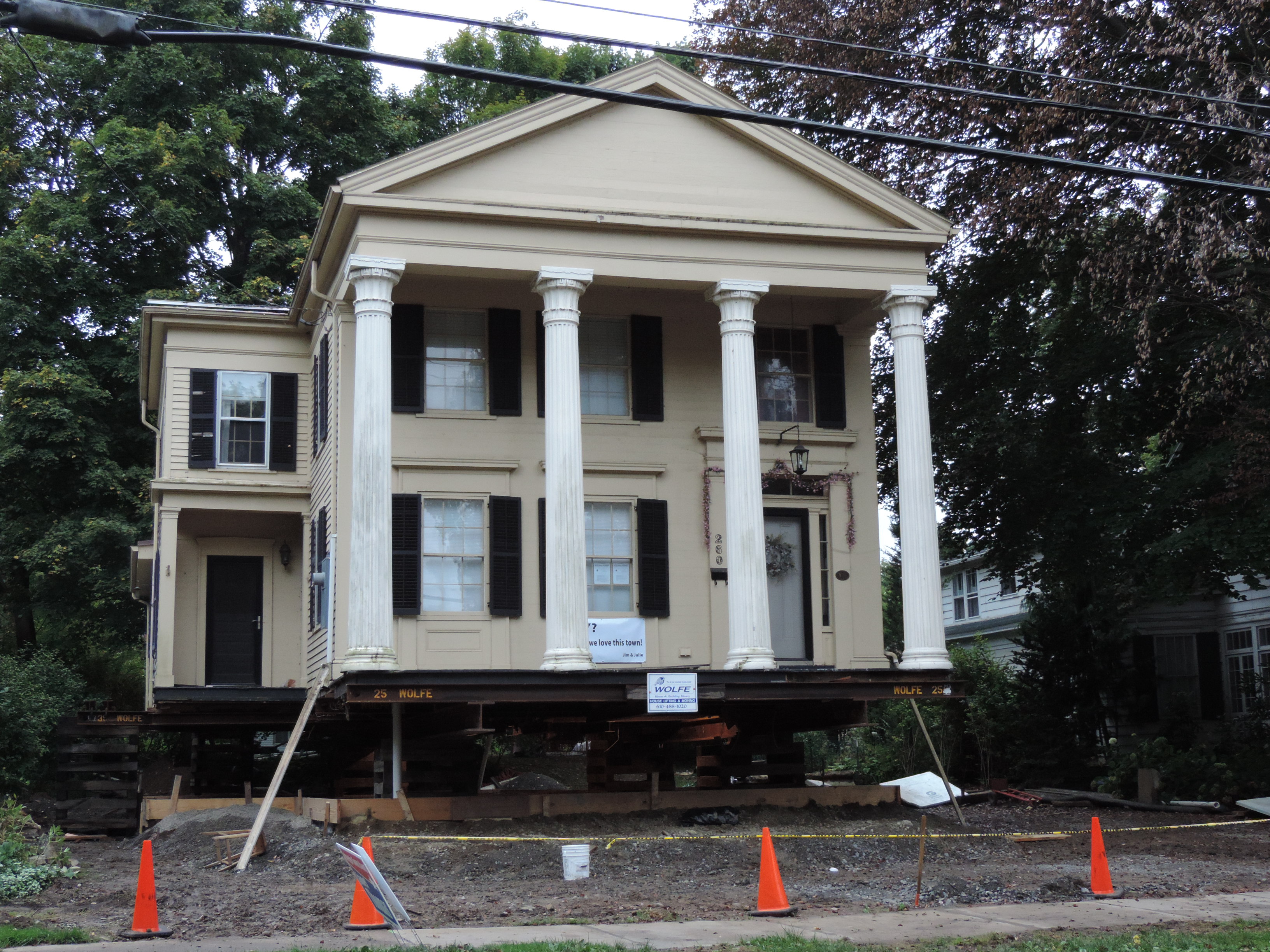
The first historic home in the Village of Owego, N.Y., which is classified historic as part of a historic district on the State level, has been in the process of being elevated to better protect it from future floods. (Photo by JoAnn R. Walter)

A sign hanging to the left side of the front door entrance at 260 Main St. in Owego, N.Y. reads, “Why? Because we love this town!” Homeowners Jim Overhiser and Julie Nucci hope to move back into their home by November or December 2015. (Photo by JoAnn R. Walter)
The first historic home in the Village of Owego, N.Y., which is classified historic as part of a historic district on the State level, has been elevated to better protect it from future floods. The project, another positive sign for an area still recovering from the flood of 2011, joins a number of homes already elevated or to be elevated in the future.
The property located at 260 Main St., and a link to the history of the community, is currently sitting six feet off the ground, but once the process is complete will be elevated a total of four feet.
According to County Historian Emma Sedore, LeRoy W. Kingman, who came to the Owego area in 1849, the son of John Kingman of Cortland County, most likely built the house, however the exact date is unknown. One of Kingman’s children, son LeRoy Jr., became the Editor of the Owego Gazette, among other positions in the town.
Current owners, Julie Nucci and Jim Overhiser, originally moved into the home in April 2010. The flood of 2011 left three and one half feet of water in the home, and the couple is thankful for countless friends, neighbors and many strangers who helped them through the difficult period.
Approached by a Federal Emergency

During the flood of 2011, Julie Nucci and Jim Overhiser experienced three and one half feet of water in their home located at 260 Main St. in Owego, N.Y. (Provided Photo)
Management Agency (FEMA) representative within two weeks after the flood, the process, although a long wait, was for the most part a positive experience.
Now four years later, after patiently waiting their turn after other disasters took FEMA’s priority, such as Hurricane Sandy, and following up with several phone calls and other inquiries regarding their status, the Owego couple is finally feeling a level of relief.
After weighing many factors, opting to take the FEMA route, which covers 75 percent, worked best for their circumstances. The couple had to be prepared to front the money and get reimbursed. By meeting program requirements, a “historic tax credit” will help, plus consideration from the National Flood Insurance Program’s “Cost of Compliance” coverage. The NY Rising Community Reconstruction (NYRCR) Program elevation option has been the chosen route for other residents in the village.

Julie Nucci stands next to her home located at 260 Main St. in Owego, N.Y. The first historic home in the Village of Owego to be elevated, the process will better protect it from future floods. (Provided photo)
Nucci commented, “We never waited more than a month to get reimbursed,” and she added, “The representatives at the Albany office were very supportive.” Nucci also spoke favorably of support received from the village.
The 260 Main St. elevation project is being handled by Wolfe House & Building Movers from Bernville, Pa. Nucci shared, “Optimistically, we hope to move in by Thanksgiving; realistically, by Christmas.”
The couple shared what they believe is an important point, “People who can do this can protect the tax base.”
The elevation projects protect homes from future flooding damage, reduce flood insurance rates, and help homes stay on the tax rolls and increase their value.
Once the elevation process is complete, Nucci and Overhiser shared plans of placing a stone keepsake near the home, and engraved on it will be the approximate date the house was built along with the date the house was elevated.
Today, attached on the home is a message to the community from Nucci and Overhiser. A sign hanging to the left side of the front door entrance reads, “Why? Because we love this town!”


